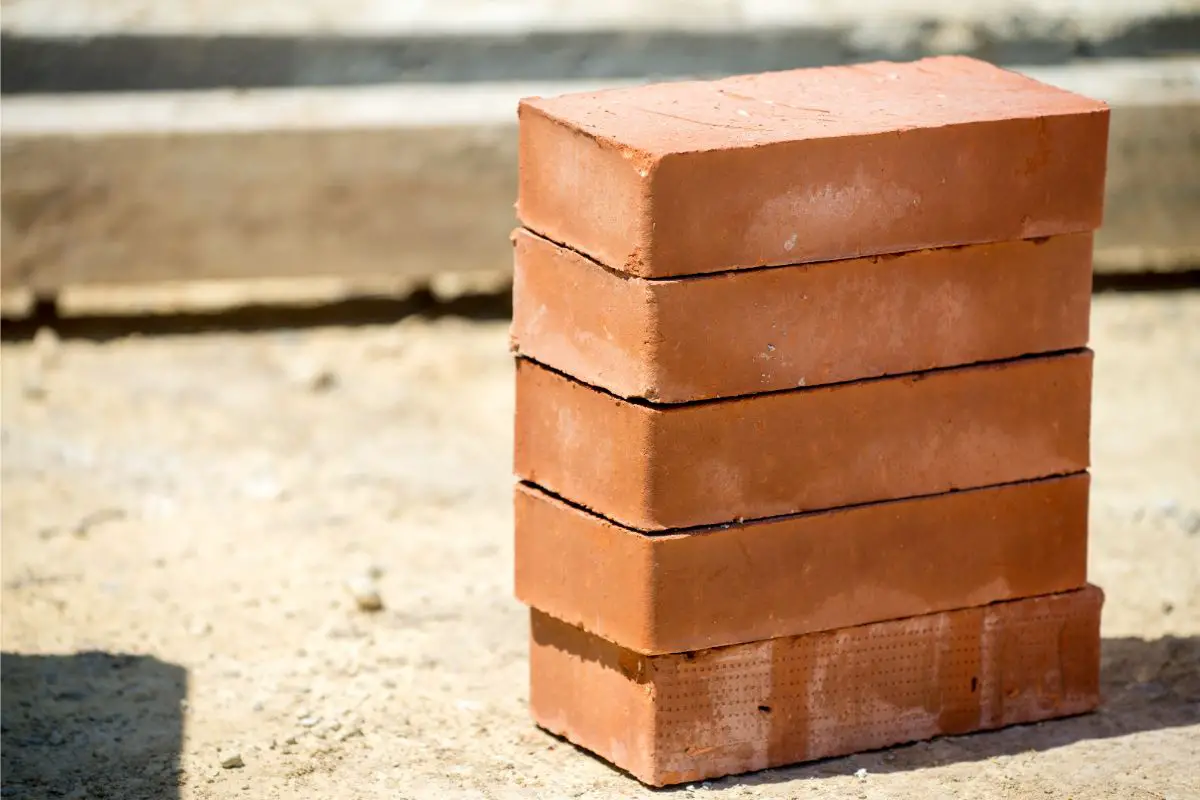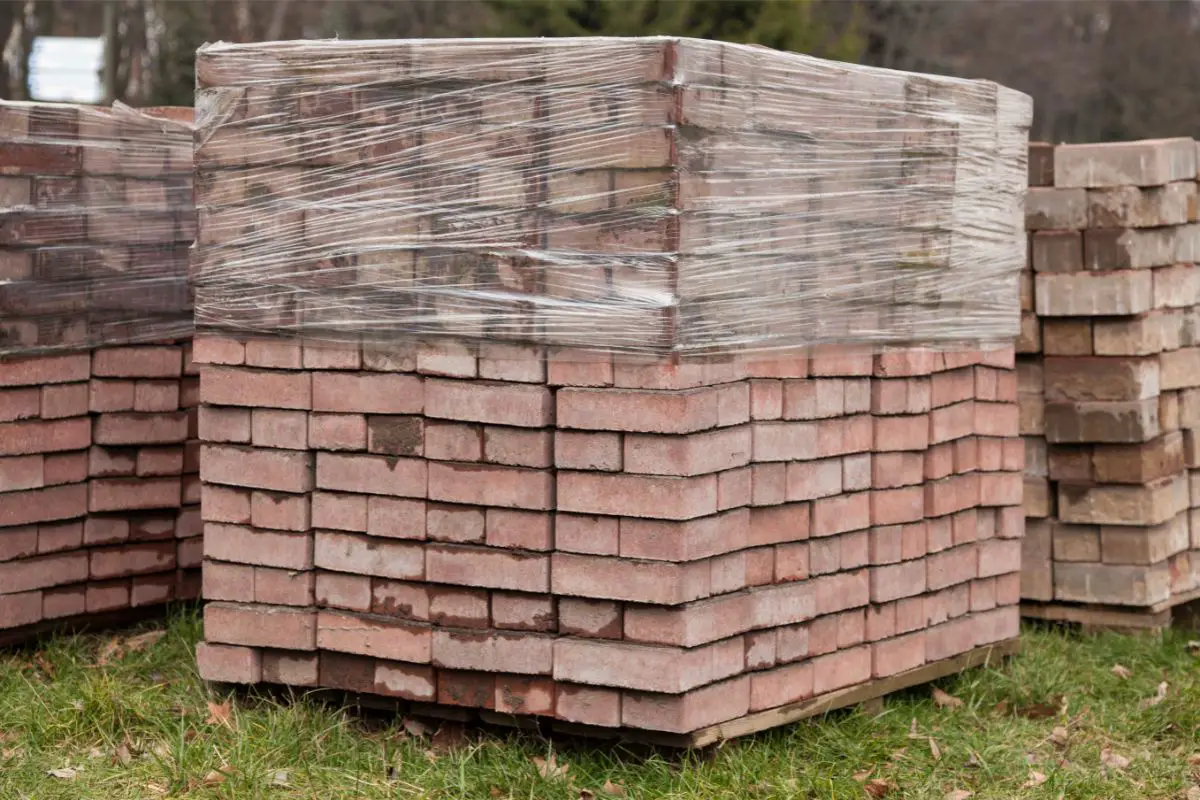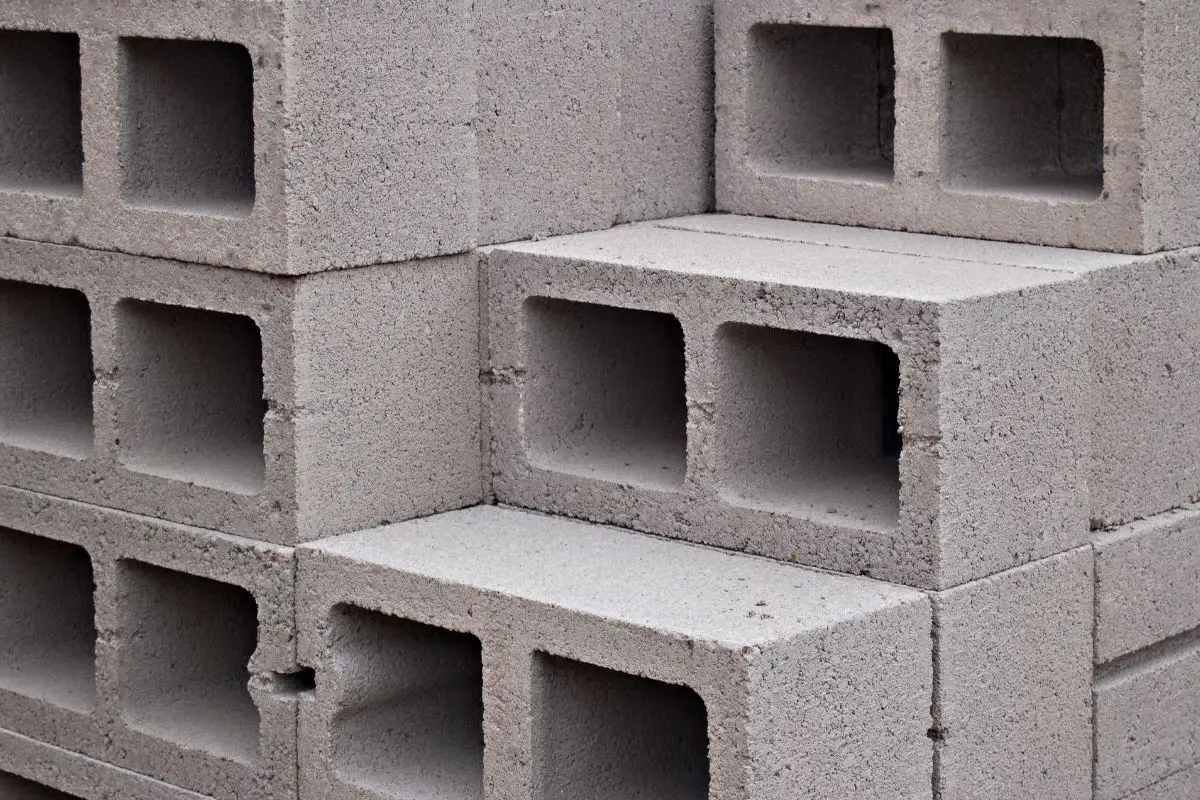There are certain standards that bricks must conform to, but there is no singular weight that a brick has to conform to, and not all bricks will weigh the same.

Obviously, there are many types of brick, but when a person thinks of the ‘average brick’, it will usually be a reference to the oblong red bricks that fit in the hand.
The weight of a brick will depend on its size of it and the material that is used to construct it. The ballpark dimension of your average red brick is 3.5 x 2.5 x 7.75 inches. However, the average weight of a common red brick is around 4.5 pounds.
But what are the variables that you have to consider for a brick’s weight? How does the material of the brick factor into the weight? Are there different names for different sizes of brick?
Well, we’re going to discuss what makes up a brick and which factors determine its weight.
Why Are Bricks Used In Construction?
Bricks have been used for centuries in building houses and other structures. This is because they are very durable. You can see structures made from bricks still standing after 100 years.
A lot of these bricks and very breathable and more flexible than you might think. Some bricks have holes going through the center, which means that they are lighter, easier to carry, and cost less, as bricks are measured by their weight.
The more bricks that a builder can use, the more secure the structure that they are building. Bricks are also quite easy to repair and you can remove damaged bricks and replace them with new ones without compromising the whole structure.
What Does A Brick Weigh?
Well, there are as many different types of brick as there are people and each brick has a different weight in much the same way as different people have different weights. The only way you can calculate the weight of a brick is by estimating the average weight.
The average weight of a common red brick that is fired with clay is around 4.5 pounds. Using this estimate, you can calculate 1 ton of bricks is made up of around 444.44 individual bricks.
Most pallets have 500 bricks on them, so the total weight of them will be around 2,250 pounds. This is around 1.25 tons of bricks. However, pallets of cored bricks will weigh a lot less, which makes them cheaper to buy.
How Much Is A Pallet Of Bricks?

A few decades ago, different brick manufacturers and builders had very different ideas about what constituted a pallet of bricks.
Some of this variance remains, although organizations like Grocery Manufacturers’ Association have pushed for standardization of pallets.
Generally, a pallet will be around 40 x 48 inches, which is around 1,920 square inches. If you have a brick that is around 8 x 2.25 inches, then you’ll need a round 113 individual bricks to cover the bottom of the pallet.
Then you’ll need to stack the bricks on top of each other. Using the above number, you can calculate that you’ll need around 4 or 5 layers before you make up your 500 bricks.
The weight of the pallet itself will also factor into the overall pricing. A lot of pallets are made from wood, which is a relatively lightweight material, although you can get pallets made from plastic which is a lot lighter.
If your pallet has to carry something really heavy, then it could even be made from metal.
What Are The Different Materials That Bricks Can Be Made From?
There are many materials that bricks can be made from, each one will have its own unique measurements and weight. Here is a brief run-down of the materials that are used in brick-making:
Sun-Dried/Unburnt Clay Bricks
These are quite insubstantial bricks and are often used in the construction of temporary buildings. As might have been suggested by the name, these bricks are often molded and then left to dry under the heat of the sun.
These bricks cannot be used for permanent structures, as they easily succumb to water and fire damage.
Burnt Clay Bricks
These are much better quality than the bricks we’ve listed above, however, these bricks are broken down into different categories: First class, second class, third class, and fourth class.
The first-class bricks are good quality, and they are the most used in permanent structures. However, this also means they are more expensive than other classes of brick.
Second-class bricks are burnt in kilns much like the first-class, although they are of slightly inferior quality. They are grounded molded, which means that they have irregular edges and not one brick is the same weight as the others.
Third-class bricks are very poor quality and are only really used in temporary structures. Fourth-class bricks are often very poor quality and are usually crushed and used in the making of concrete. They are usually the result of overbaking.
Fly Ash Bricks
These bricks are made from a combination of fly ash and water, which makes them durable and especially resistant to freezing temperatures. These bricks also have uniform sizes, which makes them more accurate for construction.
These bricks are very high in strength, water resistance and they do not need to be soaked before they are used for construction.
Concrete Bricks
These bricks are extremely durable as they are made from a mixture of cement, sand and water.
A lot of builders prefer to use these bricks as they can be made on the construction site. They also don’t require that much mortar and you can manufacture them so that they have different pigments.
Conclusion
Bricks do not have a standard weight, but there are certain rules that govern their manufacture. The best way to calculate the weight of bricks is to use an average of 4.5 pounds. This will guarantee a more accurate measurement of your brick pallets too.
- What Kind of Room Has No Doors or Windows? - December 1, 2023
- What is a Powder Room? - December 1, 2023
- What Is a Kitchenette: Exploring the Features and Benefits of a Compact Kitchen - December 1, 2023










